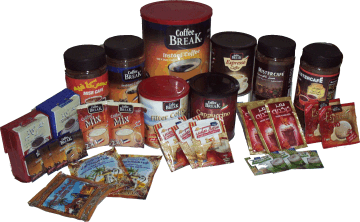Wrote this article for the
Oasis Magazine this month. Hadn't got round to scanning and posting it.
Managing Overseas Houseguests
Having moved to Egypt, the one thing most expats have in common other than being hassled for baksheesh, is houseguests. Egypt is a country most people have had secret dreams of visiting from the time they first studied or read about it. Having someone living in this exotic country gives them the added incentive to visit. Having you here, gives your houseguests a chance to spend time with their loved ones (you and your family) besides saving on accommodation costs and having a companion guide accompany them on sightseeing trips, who can speak to them in a familiar language or accent.
We have had about 50 houseguests over the last one year and all of them have been welcome ones and we have been on good terms even after they left. It may seem like an impossible feat, but it is quite possible for you to achieve the same whether you have a deluge of visitors or a couple of them every year. There are a couple of tips that can help you achieve this state of zen. The most essential tip is to screen your guests before they even arrive.
Tip 1: Do not issue invitations to people you do not want visiting, the acquaintances who make you want to our lock your house and check into a hotel for the duration of their visit, the ones who will drive your spouse to drink, incite your children to rebel or your household staff to walk out. Your staff has that option, your family members don’t, so make sure that your family is also comfortable having these people over as houseguests.
If trouble making acquaintances want to visit, then respond with a polite no and feel free to embellish with excuses that you won’t be around or someone else is visiting during that time. Your long term family harmony is more important than the guilt you may feel, over saying “no”
Tip 2: Once you have invited someone to come over, check for any dietary requirements or restrictions. This gives you a chance to be prepared ahead of time and source hard to locate items, plan your menus, identify appropriate restaurants and have a well stocked larder so that there is no panic at the last moment.
Tip 3: If your guests plan to visit anything outside of Cairo, then clarify this as soon as they book their tickets to Egypt. Hotel, train, cruise and domestic flight bookings need to be made in advance and often you can get better deals if you book ahead of time. Often these bookings are cheaper if made within Egypt than outside. Knowing this, the choice is up to you on whether you want to volunteer to make these bookings on their behalf. If you do make these bookings, have it clear upfront as to who will make the payment to whom and how, to avoid any nasty repercussions later.
Tip 4: Most polite houseguests (we have tried to eliminate the other kind with Tip 1) will ask you what you would like them to bring for you and your family. Have a list ready for such occasions, with hard to locate items/ingredients in Egypt or items which are frightfully expensive here when compared with back home. Most visitors also travel light, so the heavy electric comforter you did not bring back to Egypt on your last trip home because you did not want to pay excess baggage, may easily fit into your sisters baggage when she visits. If someone is coming from India, I normally ask for Indian cooking spices, spice mixes, medicines(favored brands) or local movies that aren’t available in Egypt. If someone is coming from the US, then I check with them if it will fit within their baggage weight limits then buy books online from Amazon and have it shipped to their location to bring along.
Tip 5: Every visitor (above 21) is allowed to buy 3 bottles of alcohol from the Duty Free shop in Egypt on the day that they arrive. If you would like to stock your bar, then request to use their limit. A small note will be made on their passport, but it is only to prevent them re-using their limit, it won’t cause any other problems.
Who pays for what is a cultural thing. Take a call on this based on your own relationships.
Tip 6: Once they arrive, don’t hesitate to set some ground rules. These could be any of your house rules that are really important to you - ranging from restricted TV viewing hours for the children to bedtimes. Decide before hand which house rules are ok to be suspended when you have house guests and which ones cannot be compromised.
For eg: I am not an sunrise worshipper, so for my early bird guests, I let them know the night before where all the breakfast items are and how the gas and microwave operate and let them fix themselves their morning meal. This way I don’t resent their being around and having to realign my schedule and they don’t feel like they are over-imposing.
Tip 7: Always familiarize your guests with the kitchen even if you have round-the-clock house help, so they can help themselves to a snack or fix themselves a cup of coffee at odd hours without feeling too bad about it.
Tip 8: The main reason why most visitors come to Egypt other than to see you, is to see the sights. If you have just one or 2 sets of a visitors a year and you are really close to them, you may consider visiting some of the sights with them and doing a fair bit of guiding. But, if the thought of another viewing of the pyramids or the citadel is just too painful to contemplate then you have 2 options depending on your guests.
The first option is to fix them up with a guide or sight seeing service that you have used before or has been personally recommended to you. There are a lot of fly-by-night operators out there, so make sure you use someone reliable.
The second option is to fix them up with a cab company or your own driver who will take them and bring them back from the sights. If you give them your own driver then have a plan for who will take the family around on their daily routes.
Tip 9: Prepping your guests: Most of my guests have been the do-it-yourself kind of travelers. So I hand over the most appropriate guide book for each location, draw up a rough map telling them which sights are not to be missed at the location and give them any other require information. I also give them insights, like the Egyptian museum not allowing cameras and photography inside the museum, but there is a safe counter outside where they can leave their cameras if stopped.
Guests will find information like the cleanest washrooms, best places to stop for a bite and how much to tip, invaluable, especially if they are sightseeing without a guide.
Remind your guests to constantly sip on water to combat the dry heat of Cairo and give them at least one bottle of chilled water when leaving the house. These little personal touches will make your guests feel really welcome and at ease.
Tip 10: Souvenirs: Every visitor would like to take some kind of souvenir back with them. It is up to you whether you send them shopping on their own into the khan / City stars section of the khan or go with them.
I like to shop with my visitors to make sure that they aren’t completely ripped off. I have my regular shops in the khan where the vendors start at lower rates than they would with complete strangers. Then I let my friends do the choosing and bargaining while I sip on a shai or karkadee that almost all shopkeepers offer on each visit.
It is important to let your guests do the choosing and bargaining so they end up buying what they want and pay what they are willing to pay and not something you like and what you think it is worth.
It is important to know that money can break many relationships, so be upfront about this. Who pays for what, is very culture and relationship dependant, so there is no hard and fast rule. Work out what works best for you and your family and be clear about it.
In low context cultures, it is common for house guests to treat the family they are staying with to dinner and drinks at a restaurant on most evenings. In high context cultures it may be expected for the host to do a lot of the cooking at home, especially in Egypt where home style cooking may not be available outside the house.
Your guests may like to try the local cuisine or they may like to cook for you one evening. Keep yourself flexible to adapt to these things and accept a few last minute changes, rather than making a plan a month in advance and trying to stick to it as far as possible. This will keep you in a more relaxed mood.
I also like to let my guests set their own pace for sightseeing. I give them a brief idea on what are the main highlights to be seen in Egypt and let them plan their own time in Egypt. This relieves me of the pressure of planning and they do not feel the pressure of following my time table. Instead they can enjoy spending the most time doing what they like best.
Also remember, everyone needs space and time to themselves. While accepting this of your guests, also accept this of your family. Do not expect your spouse and children to spend all their time at home making polite conversation with your visiting aunt and uncle. Let them enjoy their evenings too, doing things they normally do.
The key is to keep things as normal as possible for you and your family and be prepared for some flexibility in your routine. This will ensure that your house guests have an enjoyable stay in Egypt and you and your family retain your sanity and good humor.
Karishma Pais (Kim) is an expat trailing wife in Cairo. She has a Masters Degree in Human Resources and Behavior. She consults on HR projects, delivers intercultural training at the CSA, counsels new and experienced expats, writes for several magazines – online and offline, she runs whazzupcairo@yahoogroups.com and whazzupcairo@googlegroups.com among other activities. Her Social Commentary and blog about life in Egypt can be read at http://whazzupegypt.blogspot.com
 “This blog invests and believes, in ‘proximity’ meaning, that blogging makes us 'close'. They are all charming blogs, and the majority of them aim to show the marvels of friendship; there are persons who are not interested when we give them a prize, and then they help to cut these bows; do we want that they are cut, or that they propagate? Then let’s try to give more attention to them!”
“This blog invests and believes, in ‘proximity’ meaning, that blogging makes us 'close'. They are all charming blogs, and the majority of them aim to show the marvels of friendship; there are persons who are not interested when we give them a prize, and then they help to cut these bows; do we want that they are cut, or that they propagate? Then let’s try to give more attention to them!”

































 ,
,  ,
, 


























